Zeinab Masri | Amal Rantisi | Khaled al-Jeratli
Accelerated and consecutive events, internally and regionally, gale the Autonomous Administration of North and East Syria (AANES), which may tighten the noose on the Administration areas and its military wing, the Syrian Democratic Forces (SDF).
While units of the elite Fourth Division were besieging the SDF-held neighborhoods in Aleppo city, the US-backed forces retaliated by besieging the regime’s areas in al-Hasakah in conjunction with Turkish escalation at the northern border and confrontations between the Islamic State group and Iran-backed militias in the eastern Badia.
All developments are scalding amid a state of security chaos in the Kurdish-controlled areas that affected the residents who suffer from deteriorating living and economic conditions due to the closure of the crossings, inflation, and soaring prices.
In this lengthy article, Enab Baladi discusses the impact of the military and security tensions in northeastern Syria, the economic crisis, and regional political rapprochement in regard to the behavior of the Autonomous Administration with its allies in the region.
SDF as pressure card
Turkey, US turn differences page
“Turkey is an important US security partner. Turkey has been a valued NATO Ally since 1952. Turkey was a leader in the Alliance’s Resolute Support Mission. Turkey is engaged in intensive efforts to defeat terrorist organizations both inside and outside its borders, including the Kurdistan Workers’ Party (PKK), the Revolutionary People’s Liberation Party/Front (DHKP-C), and ISIS. As a vital member of the Defeat-ISIS Coalition. Turkey contributes to international security alongside US forces in Europe.”
This is how the US State Department defines relations between Ankara and Washington, with the US affirming the Turkish government’s commitment to policies and procedures that build public confidence in the country’s democratic institutions and the rule of law, as well as adherence to human rights obligations.
The possible Turkish-US rapprochement may reflect on several files, including the SDF presence in northeastern Syria along the borderline with Turkey since Ankara views the SDF as the Syrian branch of the outlawed Kurdistan Workers’ Party (PKK), which is classified as a terrorist organization in Turkey.
Turkey and the allied Syrian National Army (SNA) launched two military operations on the SDF areas, namely Operation Peace Spring east of the Euphrates River on 9 October 2019, during which it took control of the Tal Abyad and Ras al-Ain areas, and Operation Olive Branch in 2018, in which it took control of Afrin region, northwest of Aleppo governorate.
Tangible rapprochement between Washington and Ankara
On 7 April, Turkish Foreign Minister Mevlüt Çavuşoğlu announced that he would meet with his American counterpart, Anthony Blinken, in Washington, DC, on 18 May.
This is the first invitation in three years between the two NATO members who have taken steps to improve long-strained relations.
Çavuşoğlu’s statement was preceded by the publication of the Turkish presidency, where several regional files were presented between the Turkish presidential spokesman, Ibrahim Kalın, and the US State Department’s advisor in charge of political affairs, Victoria Nuland, in which they reviewed issues of energy security, defense cooperation, and bilateral political and economic relations.
Çavuşoğlu announced on 4 April the launch of the Turkish-US Strategic Mechanism in Ankara, in accordance with the understanding reached during the meeting between Turkish President Recep Tayyip Erdoğan and his American counterpart, Joe Biden, in Rome, October 2021.
Erdoğan demanded last March, in a phone call with Joe Biden, the lifting of sanctions on his country, saying, “It is time to lift the unfair US sanctions on Turkey.”
Erdoğan says Turkey is looking forward to the United States’ response as soon as possible to its request, including the purchase of 40 new aircraft and the modernization of the American “F-16” aircraft in the Turkish Air Force.
Biden also thanked his Turkish counterpart for Ankara’s efforts to support a diplomatic solution to Russia’s war on Ukraine, according to a White House statement describing the talks between the two presidents as “constructive.”
SDF in crosshairs of US-Turkish rapprochement
The Democratic Union Party (PYD), the Syrian branch of the PKK, is the nucleus of the US-backed Autonomous Administration.
The Kurdish People’s Protection Units (YPG) and the Women’s Protection Units (YPJ) are the mainstay of the SDF which relies on PKK members for ideological and military training.
Turkey classifies the SDF on the list of terrorist entities since Ankara considers it as the umbrella of the YPG and an extension of the PKK, which is classified as a terrorist group internationally and is accused of carrying out bombings and assassinations in Turkey and the world.
When talking about relations with the US, Turkish officials always refer to the issue of its support for the Kurdish forces in Syria, while Washington claims that its support for the SDF is part of the fight against the Islamic State group.
Çavuşoğlu stressed when announcing the meeting with his American counterpart expected next May that “Ankara is dissatisfied with some of Washington’s actions, especially its support for the SDF in northern Syria.”
Badr Mulla Rashid, an expert in eastern Euphrates affairs, told Enab Baladi about the expected impact of any rapprochement between regional and international actors in the war-torn country, such as the Russian-American rapprochement in the phase of ending the revolution in mid-2015.
This, in one way or another, means that the reality of the SDF and the Autonomous Administration will be affected by any new US-Turkish understandings; however, many of the understandings will be in light of what was agreed upon in 2019, like removing the SDF from the borderline with Turkey at a distance of approximately 30 kilometers, in addition to the necessity of expelling the PKK militants from the east of the Euphrates, according to Mulla Rashid.
On 22 October 2019, the Turkish and Russian presidents concluded an agreement in the resort of Sochi city regarding the areas of northeastern Syria.
The agreement stipulated the complete withdrawal of all Kurdish forces from the borderline of Syria, at a depth of 30 kilometers, in addition to the withdrawal of weapons from Manbij and Tal Rifaat.
The two sides also agreed to the conduct of Turkish-Russian patrols at a depth of ten kilometers along the border, except in Qamishli city, while maintaining the situation between the towns of Tal Abyad and Ras al-Ain.
The agreement allowed the Syrian regime forces to enter the areas east of the Euphrates for the first time since 2012, within understanding with the SDF and in conjunction with the start of the US withdrawal from Syria.
| The Kurdish Democratic Party (PYD) has relied on the Kurdistan Workers’ Party (PKK) in structuring and strengthening the military formations of the Kurdish People’s Protection Units (YPG) and training its leaders such as Khabat Derik, Jan Polat, Shahin Gilo, Ilham Ahmed, Aldar Khalil, and many others. This experience helped them set goals and draw plans to control cities and recruit and train young people, Which was not within the reach of the rest of the Kurdish parties, according to a research study by the Omran Center for Strategic Studies entitled “Military and Security Structures in the Autonomous Administration Areas.” |
Will US support for Kurds be changed?
According to Mulla Rashid, the US has been trying to take steps to satisfy the Turkish side since 2016, with Turkey launching Operation Euphrates Shield and Operation Olive Branch and the most recent Peace Spring Operation in 2018.
All three military operations were launched due to Turkish pressure and international consensus, in which the United States played a major role, Mulla Rashid added.
The US has strategic goals in Syria as fighting the Islamic State group and maintaining pressure on the Syrian regime.
Mulla Rashid expected that the American pressure on the SDF may increase so that it takes steps toward the forces representing the opponents of the Syrian regime, whether the Syrian National Coalition (SNC) or the Kurdish National Council (KNC).
In turn, Mahmoud Alloush, a researcher in Turkish affairs and international relations, believes that the Joe Biden’s Administration has taken a different approach from former President Donald Trump in the matter of supporting the SDF and has revived the close relationship with it.
This issue is a priority for Turkey, and it will seek to pressure Washington to change its policy toward the YPG, as it will not be possible to expect a normal return to Turkish-US relations without addressing the Turkish concerns, according to Alloush.
Despite Washington’s support for the SDF, it turns a blind eye to Turkish strikes from time to time against the YPG, according to Alloush, who considered that the Americans are no longer fully committed to backing the Kurdish ally and have other priorities, which may allow Ankara to extract concessions from Washington in this regard.
However, the YPG has other relations with Russia, which has become a major player in the Kurdish file. “If the US abandons the YPG, it will become more dependent on Moscow,” Alloush assured.
Faltering dialogue between Syria’s Kurds
The Kurdish-Kurdish dialogue began with an initiative launched by the leader of the SDF, Mazloum Abdi, after the Turkish operation Spring Peace east of the Euphrates in October 2019 and Trump’s announcement to withdraw the US army’s troops from some of its bases in Syria.
The two main poles of dialogue are the US-backed Democratic Union Party (PYD), which forms the nucleus of the Autonomous Administration, and the Kurdish National Council, which is close to Ankara and Iraqi Kurdistan and is affiliated with the Syrian opposition, whose offices have previously been closed, a number of its members have been arrested, and its military arm has been expelled from the region.
The Kurdish-Kurdish dialogue was launched in October of 2019 and reached a dead-end in October of 2020, amid mutual accusations between the dialogue parties about the obstruction.
On 17 December 2021, the Kurdish National Council issued a statement about its meeting with the new US deputy envoy to northeastern Syria, Matthew Pearl, and his predecessor, David Bronstein.
The statement said that the US delegation affirmed support for Kurdish-Kurdish dialogue in Syria and the need to “resolve differences between the Kurdish National Council and Kurdish national unity parties,” stressing the council’s importance in the political process of the current situation in Syria.
In a briefing statement issued by the Kurdish National Council on 11 April, the Democratic Union Party demanded the resumption of the “long-stalled” negotiations and the cessation of media campaigns against the Kurdish Council, its parties, and allies.
It is possible that the Kurdish-Kurdish consensus will play a role in relieving Turkish pressure on the US as Turkey seeks to end the presence of the PYD, leaving the region under the control of its rival, the Syrian Kurdish Council.
The expected consensus will allow the involvement of Kurdish political forces, such as the Kurdish National Council, which will put Washington in a better position to respond to Turkey’s continued allegations and threats, analysts told Enab Baladi in a previous extended article titled “Kurdish-Kurdish rapprochement maps out new alliances.”
Analyst Mulla Rashid said the US is trying to revive the Kurdish dialogue, but so far, there has been intransigence on the part of the Autonomous Administration, especially with regard to the issue of expelling PKK fighters who are still active in the region in several hundreds, based on a statement by the SDF leader Mazloum Abdi in one of his interviews.
The Kurdish National Council believes that the presence of unidentified members of the PKK in the region will not lead to the success of any agreement between the two sides, Mulla Rashid added.
It cannot be expected that the future model in the region will be similar to the case of Iraqi Kurdistan as a result of reasons related to the ideology of the PYD, which refuses to establish any national entities according to its “partisan preambles.”
In addition to reasons related to the demographic reality that changed dramatically after the revolution, as a result of the migration of hundreds of thousands of the region’s residents abroad. The model currently proposed by many research centers and parties involved in the Syrian affairs centered around “geographically decentralized administrations” remains the one that can be proposed in the event of a Kurdish-Kurdish agreement and later an agreement with the Syrian opposition forces, said Mulla Rashid.
As for Turkey, Mahmoud Alloush, a researcher on Turkish affairs, believes that Ankara does not have a problem with the Kurds but rather with the YPG that have close ties to the PKK, and the Americans are also fully aware of this, as they cannot talk about any solution before addressing the security aspects of this issue, and if the US wants to play a positive role, they can push in that direction.
Economic stumbling, a worrying factor
The Autonomous Administration has imposed its control over the economic and financial sectors in the areas of northeastern Syria since its establishment in 2014.
It has controlled the security and military fields, and it has taken over the management of the region’s resources of oil, agricultural, and water wealth.
For this purpose, the Administration has established six parties concerned with economic affairs in the region, but the living and economic situation in the areas under its control is no different from the rest of the Syrian regions.
The Syrian northeast, which includes the most natural resources, bears the same severe economic conditions that the opposition areas bear and even the regime-controlled areas.
The markets of northeastern Syria are witnessing a hike in prices that include most of the basic staples like legumes, grains, vegetable oils, and some types of imported canned goods, accompanied by a state of general resentment among the residents.
This discontent wave emerged from several factors, most notably the Russian war on Ukraine, the closure of Iraqi Kurdistan’s border crossings, which are the region’s lifeblood for commercial traffic, and the devaluation of the Syrian pound against foreign currencies.
The rise in the general level of prices, the insufficiency of dues for fuel oil and bread, and the lack of water in some areas caused a state of ferment among the residents of the countryside of al-Hasakah and Deir Ezzor, resulted in protests calling for the Autonomous Administration to perform its duties and grant them their rights.
The protests forced the Autonomous Administration officials to make promises to improve the living situation and ease the economic crisis, stressing that solutions and decisions would be taken soon.
In statements to the Asharq al-Awsat newspaper on 10 April, Hussein Kojer, the Vice Chairman of the Executive Council of the Autonomous Administration, said that the Administration had taken a series of decisions and steps with the aim of achieving self-sufficiency in the areas under its influence.
The Administration will work to support the vital agricultural sector, increase the wages of workers in its institutions and departments, in addition, to subsidize flour and bread, limit the repercussions of the economic and food crisis in Syria in general and the eastern Euphrates areas, in particular, due to the repercussions of the Russian war on Ukraine.
Influence map governed by turmoil
The areas of northeastern Syria, where local and foreign forces overlap, are a microcosm of the conflict on the Syrian map between foreign forces and their local allied factions.
The spheres of influence in some neighborhoods of the Syrian cities and towns overlap significantly, to include military forces from two conflicting groups in one region and different ones in another within military conditions that impose alliances of interest against other foreign forces.
This case is clear in Qamishli and al-Hasakah, in which the regime forces and the SDF share influence, while these alliances become tense from time to time, leading to armed confrontations.
The risks of any Turkish military operation against the SDF impose an overlapping military presence of the regime forces and Russia in the SDF-held areas within the framework of military alliances.
On the other hand, the US military bases are a reflection of any kind of escalation that the region or international disputes may witness.
The escalation may be between Iran and the US or Russia and the US, which is manifested in soft clashes between the Americans and the Russians or their allied militias, and between the Americans and pro-Iran militias.
Siege vs. siege
In the past few days, the SDF-controlled neighborhoods of Sheikh Maqsoud, al-Shahba, and al-Ashrafiyeh in Aleppo city returned to the fore after the siege imposed by the regime forces who prevented the entry of basic staples such as flour and foodstuffs.
The SDF met this siege by imposing a siege on the regime-held areas in al-Hasakah and Qamishli by preventing the entry and exit of cars and vehicles.
Firas Allawi, a political researcher, explained that these security tensions between the Syrian regime and the SDF are not new and are messages between the two parties, either in the case of negotiation or separation.
He added that the tensions are used in order to raise the level of negotiation between the two parties, and in the event of disagreement, it is an attempt to put pressure on the imposition of a fait accompli from both parties as well.
Allawi pointed out that the largest area of influence in Qamishli belongs to the SDF, so it is trying to pressure the regime in this area, and this is the cause of the current tension, but it is not new, and every time the two sides reach the stage of de-escalation and calm later on.
SDF, Syrian regime at odds, why?
The siege of Kurdish neighborhoods in Aleppo is due to the accumulation of disputes and conflicting interests between the regime and the SDF, according to a study by the Jusoor Center for Studies released on 12 April.
These differences are represented in the SDF’s refusal to evacuate the educational buildings of the state al-Furat University in al-Hasakah since it took control of it last February, following a sweeping campaign tracking the Islamic State inmates who escaped the al-Sina’a prison.
According to the study, this threatens the regime’s ability to manage another service file in the northeastern governorate, namely the higher education file, which it monopolizes and uses to demonstrate its continued sovereignty and ability to provide services.
The study considered that the escalation by the SDF is a response to the increasing threat by Iranian-backed militias to the interests and forces of the international Coalition in the governorates of al-Hasakah and Deir Ezzor.
This was done by targeting the military bases of the Coalition, in addition to the obviously increasing interception of US military patrols by the regime forces and the National Defense militia, especially near the city of Qamishli.
On the other hand, members of the elite Fourth Division stationed in the vicinity of Sheikh Maqsoud neighborhood, which is under the influence of the Administration in the city of Aleppo, prevent cars and trucks loaded with flour from entering the neighborhood’s bakeries in conjunction with a living crisis in the area.
The influence of the SDF was limited to only three neighborhoods in the city of Aleppo and a number of villages in the northern countryside of Aleppo as a result of Turkish military campaigns against the Kurdish-controlled area north of the province.
Turkey seeks to change rules of engagement
The Turkish forces have escalated their airstrikes by drones in northeastern Syria against the SDF since the beginning of this April.
In conjunction with the decline in the monthly rate of joint Russian-Turkish patrols in the region from five to three, which have been running in the region for more than three years under the Sochi Agreement of 2019.
On the other hand, Russia responded to the Turkish escalation by launching air and missile attacks on several sites in Idlib, but the armed opposition factions and the Turkish forces quickly carried out an artillery and missile bombing campaign on the Jorin camp in the al-Ghab Plain in Hama governorate.
The Jusoor Center for Studies considered the escalation to be a Turkish attempt to show readiness to confront any military pressure from Russia, whose influence has significantly decreased in northeastern Syria.
Jusoor’s study indicated that Turkey’s “unprecedented” and continuous escalation in the east of the Euphrates aims to “test the reaction of Russia and the US” and explore the possibility of changing the rules of engagement in northern Syria, that is, an attempt to use military force to redefine the mechanism of joint action so that Turkey has the greatest role in monitoring and implementation tools.
Allawi, the political researcher, believes that Turkey’s main goal in its military operations and incursion into Syria is to prevent the establishment of a PKK-backed Kurdish substate.
Thus, it will end the formation of a Kurdish “canton” in the region, and this was evident in the military operations that aimed at the dismemberment of the SDF in the region.
The researcher does not believe that Turkey will penetrate into the areas of American influence (areas controlled by the SDF as well).
The Turkish escalation against the SDF appears to be a pressure process that anticipates any possible negotiations, which makes Turkey impose its conditions, especially since the Americans have tried more than once to pave the way for negotiations between SDF and Turkey.
Allawi does not believe that there are any understandings between the SDF and Turkey except in one case, which is the dismantling of the SDF and its re-formation again, and its disengagement from subordination to the PKK and other separatist parties hostile to Turkey.
The researcher believes that this is difficult for the SDF, at least for the time being, but perhaps if the SDF weakened in the region or the Americans abandoned it or tried to pressure it in one way or another, we would witness this disengagement, similar to what happened with Hayat Tahrir al-Sham (HTS) when it separated from the al-Qaeda.
The researcher pointed out that the region, in general, is heading towards established areas of influence and not an escalation in one way or another, but if the Russian role is absent, Turkey will try to take advantage to enhance its influence.
Iran facilitates ISIS crossing
Any tension in the balance of power in the eastern regions of Syria might be reflected in the activity of the ISIS sleeper cells if other parties claiming to be present in the region were busy fighting the group listed on the international terrorist lists.
Since the beginning of this April, the attacks of ISIS have increased significantly in the countryside of Deir Ezzor, ending with the burning of one of the SDF investigators, although the group’s operations during the past years have been limited to direct shooting attacks.
Iran’s position on this escalation remains questionable, as its proxies in the region, represented by militias loyal to it, play a role in it by bombing American bases in the region, such as the base of the al-Omar oil field, which was hit by a missile attack on 6 April.
The US-led International Coalition has not announced those involved in the attack until today, while local news networks that monitored the bombing said that it was carried by the pro-Iran militias.
The International Coalition said in a statement via its Twitter account that the Green Village base near the largest oil field in Syria, which is called “al-Omar” in the eastern Deir Ezzor governorate, was targeted by two missiles, which led to the injury of four American forces located in the area.
The US forces were subjected to missile launches in the same area in 2021, and the Coalition’s response appeared to be limited to US airstrikes against Iranian-backed factions in Syria and Iraq.
Iran proxies are largely concentrated west of the Euphrates River in Deir Ezzor, where they get supplies from Iraq through the al-Bukamal border crossing.
Anas Shawakh, a political researcher at Jusoor Center, said that Iran would facilitate the passage of ISIS militants and sleeper cells from the Syrian Badia region in eastern Syria to pose an additional threat to the International Coalition and SDF bases east of the Euphrates River.

The Iranian Revolutionary Guards during the commemoration of the Iran-Iraq War (1980-1988) in Tehran – 22 September 2010 (Reuters)
Escalation highlights Russia’s importance
Given the current Russian military operation in Ukraine, its entry into a new military or political escalation in Syria may be considered unlikely, but it may be in its interest.
Shawakh considered that the escalation in the region would shed light on Russia’s weight as “a regulator or organizer of the Iranian presence in Syria.”
The Russian role has previously emerged in controlling Iranian behavior in southern Syria, according to international agreements, known locally as the “reconciliation” deals, which led to the regime and Russia’s control over all of southern Syria in 2018, in return for Iran withdrawing its local militias from the areas adjacent to the Jordanian and Israeli borders with Syria.
But in the end, Shawakh did not rule out that the areas east of the Euphrates would witness confrontations or military clashes between pro-Iranian militias and the US-backed SDF as a result of the current escalation.
However, such ways of clashes or confrontations cannot go beyond the stage of temporary confrontations on a small scale between certain militias, such as the National Defense or the Iranian-backed Fourth Division and the SDF on the other hand, according to the researcher.
On the other hand, Shawakh attributed the absence of the possibility of this tension between these militias turning into an all-out war to the good relationship that exists between the Kurdistan Workers’ Party, which is one of the pillars of the SDF, and the Iranian militias in Syria.
The Syrian-Iraqi border, whether the town of al-Qaim or al-Bukamal in the countryside of Deir Ezzor, was repeatedly bombed during 2021 in a move that came to curb Iran’s arms in the region by the US administration and its key ally Israel.
At the time, the Pentagon warned of “serious consequences” if Iran continued to arm and finance militias attacking its forces in Syria and Iraq, stressing that the airstrikes that targeted “the facilities of a militia network responsible for a series of attacks will undermine the capabilities of the militias and deter additional attacks.”
Previously, the Russian Wagner mercenaries and pro-Iranian militias, accompanied by the regime forces, attacked a site controlled by the SDF east of Deir Ezzor in 2018 and bombed it with tanks and artillery.
Because of the presence of US special forces at the site, the US Air Force and the Marine Corps intervened, with “overwhelming firepower” from missile artillery, warplanes, attack helicopters, strike fighters and even B-52 strategic bombers that participated in the bombing operation.
It was not clear exactly how many Russian forces were killed during the US bombing at the time, which is due to the Russian government’s secrecy regarding the bodies and their return to Russia.
However, a US official, who spoke on condition of anonymity, told Reuters that nearly 500 pro-Assad forces were killed in the counter-attack launched by the Coalition forces in Deir Ezzor.
if you think the article contain wrong information or you have additional details Send Correction
النسخة العربية من المقال
-
Follow us :













 Russian troop carrier patrols in eastern Syria - 2020 (AFP)
Russian troop carrier patrols in eastern Syria - 2020 (AFP)





 A
A
A
A
A
A
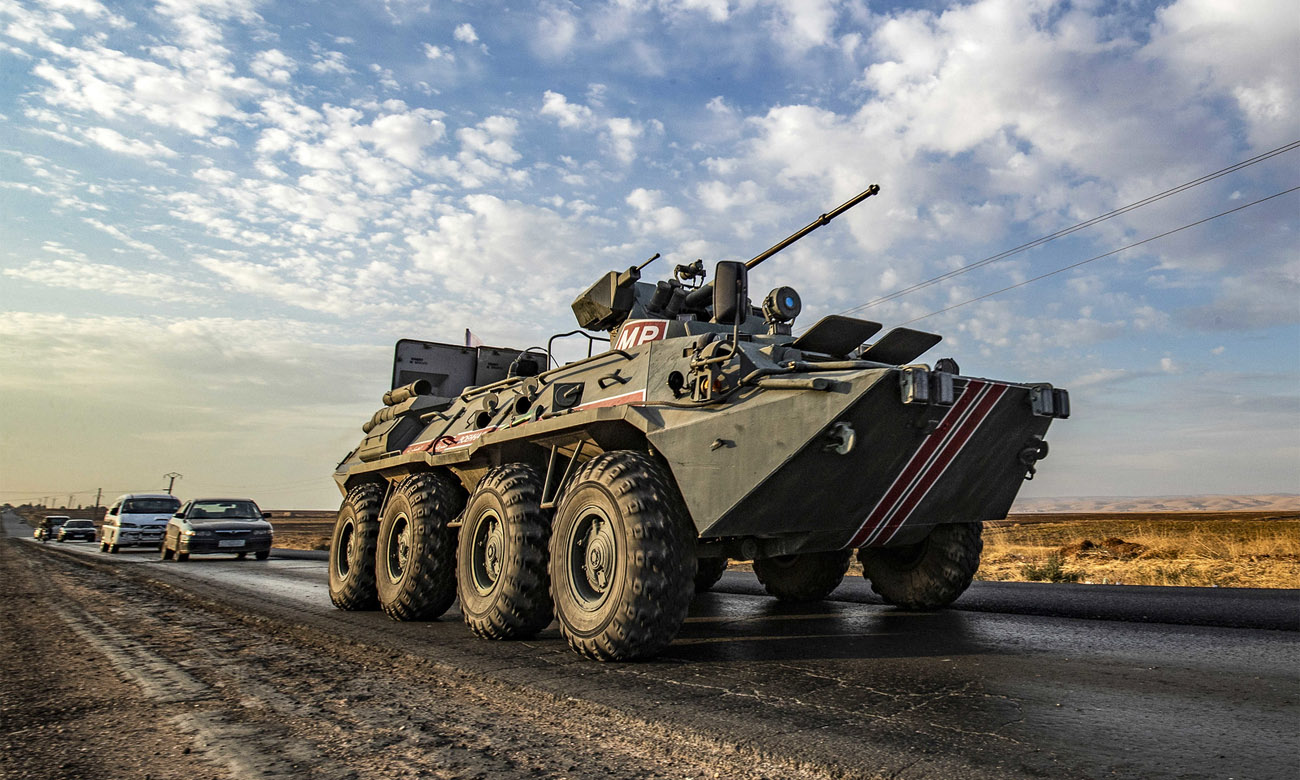
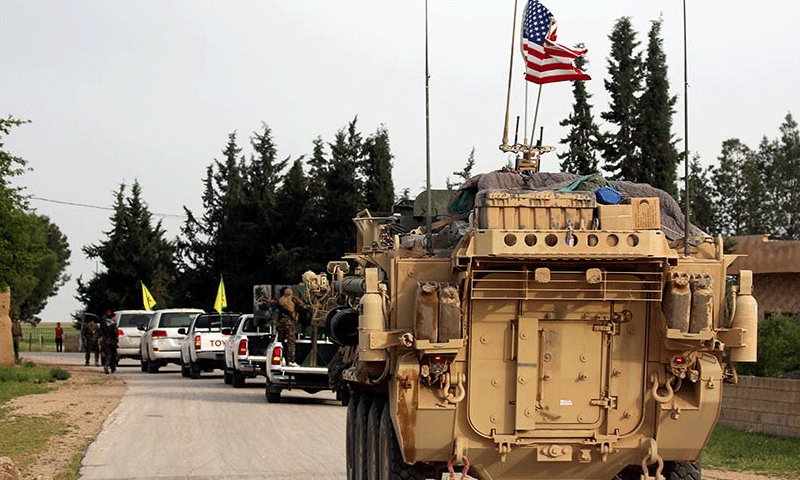




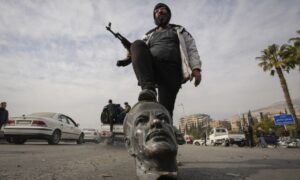
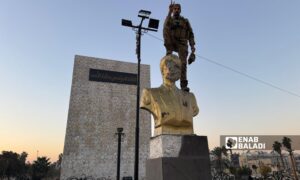

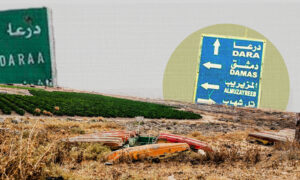

 More In-Depth
More In-Depth